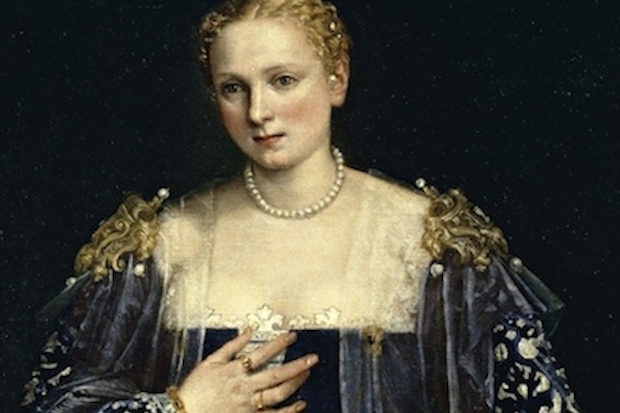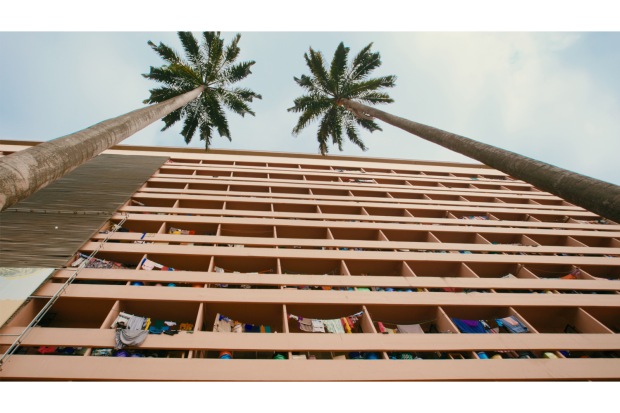In 1857, the National Gallery’s pioneering director Sir Charles Eastlake bought one of Veronese’s most sumptuous paintings, ‘The Family of Darius before Alexander’. The purchase was met with strident and very personal opposition from a Tory, Lord Elcho, in the House of Commons, but his objections were swatted aside by Lord Palmerston and we were spared the irony of fighting to defend the Indian empire while rejecting the opportunity to buy the finest painted celebration of imperial conquest.
‘The Family of Darius before Alexander’ is the centrepiece of the first monographic show in this country dedicated to Veronese (until 15 June). This is the sort of triumphant exhibition that the National Gallery does so well. Drawing on its own outstanding collection and supplemented by spectacular loans, it brings one of the great figures of 16th-century Venice into the scholarly spotlight while presenting to all-comers one of the most enjoyable painters ever to have lived.
In what is as close as the curatorial world gets to Alexandrian achievement they are well served by the charismatic young curator Xavier Salomon, appointed chief curator of the Frick last year at the age of 34.
Later this month, at Tate Modern, the sensuous side of art will be further explored in an exhibition of Matisse’s Cut-Outs (17 April to 7 September), late works of exhilarating freedom that had an enormous influence on the next generation of artists. Central to the exhibition will be ‘The Snail’ from the Tate’s own collection, the great work from the end of Matisse’s life, acquired in 1962 for the then huge sum of £23,000 on the urging of Tate trustee Roland Penrose (which must have made the long-serving director John Rothenstein blush; he had turned down Matisse’s early masterpiece, ‘The Red Studio’, 21 years earlier when it was offered for sale by a defunct London club for £400).
Scholarship will be served by the exhibition, the public appetite will be whetted, and awareness and understanding of one of Britain’s greatest treasures will be enhanced. Co-curating this exhibition with Tate director Nicholas Serota will be Nicholas Cullinan, a young curator in the department of modern and contemporary art at New York’s Met, who is known mostly for his profound contribution to the study of Cy Twombly’s work. In extending his scholarly attention to an earlier giant of abstraction, Cullinan is emerging as the key curator of mid-20th-century abstraction of his generation.
What Salomon and Cullinan have in common, apart from being among the most exciting young curators in their respective fields, is that they are both Courtauld BAs and PhDs and both started their careers in London museums. But both were tempted away from the UK by the Metropolitan museum. Salomon arrived at the Frick after a brief spell as curator of baroque art at the Met but before that he had been chief curator at Dulwich Picture Gallery and Cullinan was at the Tate. To some extent there has always been a fruitful exchange between UK institutions and America, and it has not been entirely one-way traffic. The current curator of Northern pictures at the National Gallery, Betsy Wieseman, came from the Museum of Fine Arts in Boston and the NG director, Nicholas Penny, returned to England after a decade in Washington; but, like driving into London on a Friday night, the traffic on one side of the road is much denser. Luke Syson, formerly curator at the National Gallery and responsible for the Leonardo exhibition, was hired by the Met in 2011 as head of sculpture and decorative art; joining him there will be the British Museum’s assistant keeper of prints and Spanish old master drawings Mark McDonald; Per Rumberg, also from the National Gallery, who made significant contributions to the Leonardo exhibition as well, is now at the Morgan; the trailblazer in this curatorial exodus to New York being the world-renowned expert on tapestries Thomas Campbell, current director of the Met.
A lot of this has to do with money. Curators, as a breed, are not a venal bunch but London is a painful city to live in with a low salary. New York is expensive, too, of course, but even at junior levels the rates of pay are often treble their London equivalents. Money also increases the possibilities of what you can do in your job: conferences, exhibitions and above all acquisitions are all eye-wateringly expensive. You can make a splash in Britain, and there are unquestionably great exhibitions staged here, but there is rationing: an expensive show must be matched by a cheap one; galleries must choose between their acquisitions carefully. And acquisitions have an unhealthy way of dominating a sometimes hysterical national discourse.
Sometimes the hysteria is justified. When it came to the two paintings by Titian sold by the Duke of Sutherland in 2009 and 2012, it was acknowledged by all relevant authorities that every possible effort had to be made to acquire what are arguably the greatest paintings in Britain and ones that had hung for many years on public display in Edinburgh. These were in every way exceptional. But when it comes to the fine Turners, Stubbs and now van Dycks that have enjoyed national campaigns in recent years for sums that cumulatively reach tens of millions of pounds, largely borne out of some arm of the public purse, one has to ask whether the frenetic campaign to save art is carried out on rational grounds and whether it succeeds at the expense of other cultural interests. Spending our money on one thing means that it is not available for anything else. Should we battle to prevent paintings by Stubbs of Australian mammals going to the National Gallery of Australia, a worthy home, rather than put those millions towards looking after the art we actually have?
Or invest some of it in our curators? It is not at director level that the problem lies, although the disparity in wages is as great there too. It is especially acute at the junior levels, where establishing a reputation and getting a foot on the ladder is getting increasingly difficult. The consequence is that as the right people are plucked from the UK the wrong people are sucked up. When a problem sets in it can be hard to root out and a sense of malaise hangs over Tate Britain.
A succession of lacklustre exhibitions such as 2012’s Migrations or last year’s Iconoclasm (correctly labelled ‘pernicious drivel’ by Richard Dorment) and the failure in the new hang to dedicate a single room to the Pre-Raphaelites — that rarest of things, a genuinely popular English art movement — betray a lack of scholarship and understanding. Further afield in institutions that answer to local council cuts — Liverpool or Newcastle or Southampton — the situation is abject and as a consequence there is already a breakdown in what ought to be an exciting curatorial pool.
But things can be very different with the right curators. The whiggish Nicholas Penny has just managed the acquisition of a very great painting by George Bellows for many millions of pounds, money generously given by Paul Getty and now wisely spent. Unlike the van Dyck, the Stubbs kangaroo and dingo, or even the ‘Blue Rigi’, this painting will transform the collections of our greatest picture gallery. Like the Veronese, or Matisse’s ‘Snail’, or the Sutherland Titians, this is a painting to hang an exhibition around and one that will enlarge our understanding. But if you fail to hold on to the right people, or if the wrong people are promoted, you are left with a legacy of missed opportunities.
Got something to add? Join the discussion and comment below.
Get 10 issues for just $10
Subscribe to The Spectator Australia today for the next 10 magazine issues, plus full online access, for just $10.
You might disagree with half of it, but you’ll enjoy reading all of it. Try your first month for free, then just $2 a week for the remainder of your first year.














Comments
Don't miss out
Join the conversation with other Spectator Australia readers. Subscribe to leave a comment.
SUBSCRIBEAlready a subscriber? Log in